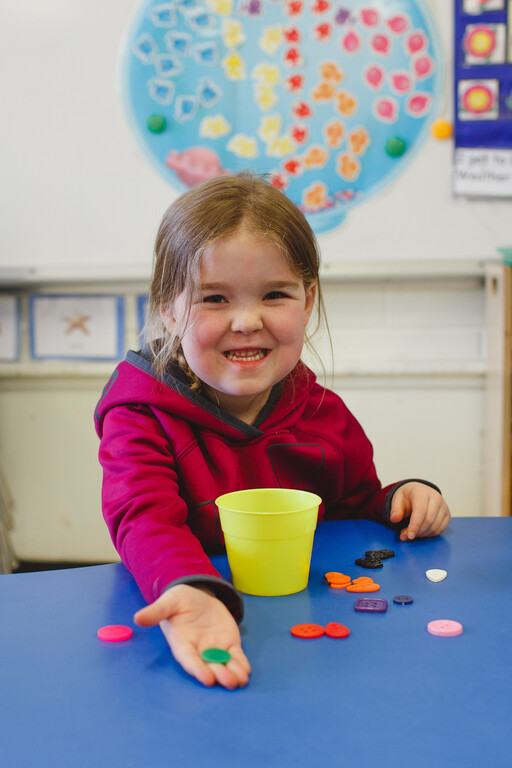The Kimochis® Start School series, produced by Strathcona County’s Family Resource Network and Mental Health Capacity Building team, continues with a three-minute video for you and your child to watch together about Hugtopus, another one of the Kimochi® characters. Hugtopus teaches about frustration and excitement. Excitement can be a fun and easy-to-have feeling, but it can also overwhelm some people, in particular young children. Children entering school for the first time are learning how to navigate a social environment where waiting to talk and turn taking can be challenging. Practicing by playing games at home or doing other co-operative activities can be beneficial.
The EIPS Early Learning team has also compiled some great tips to help enhance your child’s numeracy journey. There are various fun ways you can support your child with developing early numeracy skills. Talk about numbers as they come up in your daily lives—for example, if you’re cooking, shopping, building, crafting, setting the table, doing chores and so on, you can ask questions about the mathematics you’re already doing. Fun examples include:
- If a grown-up eats two eggs and a kid eats one egg, how many eggs do we need to make scrambled eggs for all of us?
- How many peas are on your plate? After you eat three, how many are left? If we add two more, how many do we have now?
- I wonder how many socks we just took out of the dryer? How many pairs could that be when we fold them?
- As you’re driving in the car, ask your child to notice numbers outside in their environment.
- While you’re at the grocery store, ask questions such as, “What do you notice?” and “What do you wonder?” to encourage thinking and problem solving.
- Ask your child to count items in the cart or on a display. When they’re counting, ask, “What number comes next?” or ask them to then count backwards.
Books are another great way to build numeracy skills at home. It’s a shared experience for you and your child to discuss the story and mathematical ideas found in the story. It demonstrates that mathematics develops out of human experience.
As you read a story with your child:
- Discuss the patterns you can find in a story.
- Talk about the shapes and sizes in the illustrations.
- Discuss the problem in the story and possible solutions.
- Count objects, animals or characters in the story.
Games help build many skills, including numeracy ones.
- Rolling a die and practicing recognizing the number of dots shown is called subitizing.
- Snakes and Ladders is a great game to play, as it works on recognizing the number rolled with the die—subitizing—and counting skills.
- You and your child can each roll a die and discuss who has the higher or lower number. You can ask your child to practice counting on from the number they rolled. Eventually your child can practice addition and subtraction skills using dice as well.
- Card games and games such as “go fish” will help your child with number recognition.
- All games also help your child with their social-emotional development, as they learn about turn taking, patience and problem solving.
Resources:
- Math At Home – this has great activities you can do with your child
- Math Before Bed – a great nighttime routine to build numeracy skills together
- youcubed – fun math activities to get your child thinking
- Twelve Steps to Increase your Child’s Math Achievement – a list of ideas from youcubed to make math fun



